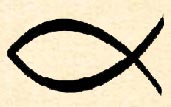The Battle of Herrings (Rouvray)
12 February 1429
 An English supply train of 300 wagons loaded chiefly with salted fish (hence the name of the battle) intended for the army besieging Orleans, was attacked en route from Paris by a Franco-Scottish army of some 4000 men under the Comte (Count) de Clermont. As the convoy escort numbered only some 500-1000 archers and 1000 - 2000 Parisian militiamen (all mounted) they were heavily outnumbered. Sir John Fastolf (the English commander) immediately drew up his wagons into a laager, with two openings before which his archers planted their stakes.
An English supply train of 300 wagons loaded chiefly with salted fish (hence the name of the battle) intended for the army besieging Orleans, was attacked en route from Paris by a Franco-Scottish army of some 4000 men under the Comte (Count) de Clermont. As the convoy escort numbered only some 500-1000 archers and 1000 - 2000 Parisian militiamen (all mounted) they were heavily outnumbered. Sir John Fastolf (the English commander) immediately drew up his wagons into a laager, with two openings before which his archers planted their stakes.
Clermont, adapting his tactics to this unexpected move, ordered his men to hold back (though they were to remain mounted) while he brought up his crossbowmen and light artillery (with which he appears to have been amply provided) to bombard the English laager. This bombardment appears to have been having considerable effect when the Scots element within the French army (commanded by Sir John Stuart of Darnley) disobeyed Clermont's instructions, dismounted and charged headlong against one of the defended openings; only to be mowed down by Fastolf's archers before they could close. The French mounted attack which accompanied or followed this futile assault similarly met with disaster, many horses impaling themselves on the stakes set by the archer's. Seeing this Fastolf seized his chance by mounting his archers and leading them out through the openings in a counterattack which broke and routed the French, the surviving Scots having already fled.
The Franco-Scots had lost some 120 men-at-arms and 500 others (mostly Scots), while the English claimed to have lost only 4 men and a few wagon drivers who had tried to run away. However, if the French artillery bombardment was really as effective as the sources seem to imply then the English casualties must in reality have been somewhat higher than was claimed.
back to Treasure Trove
